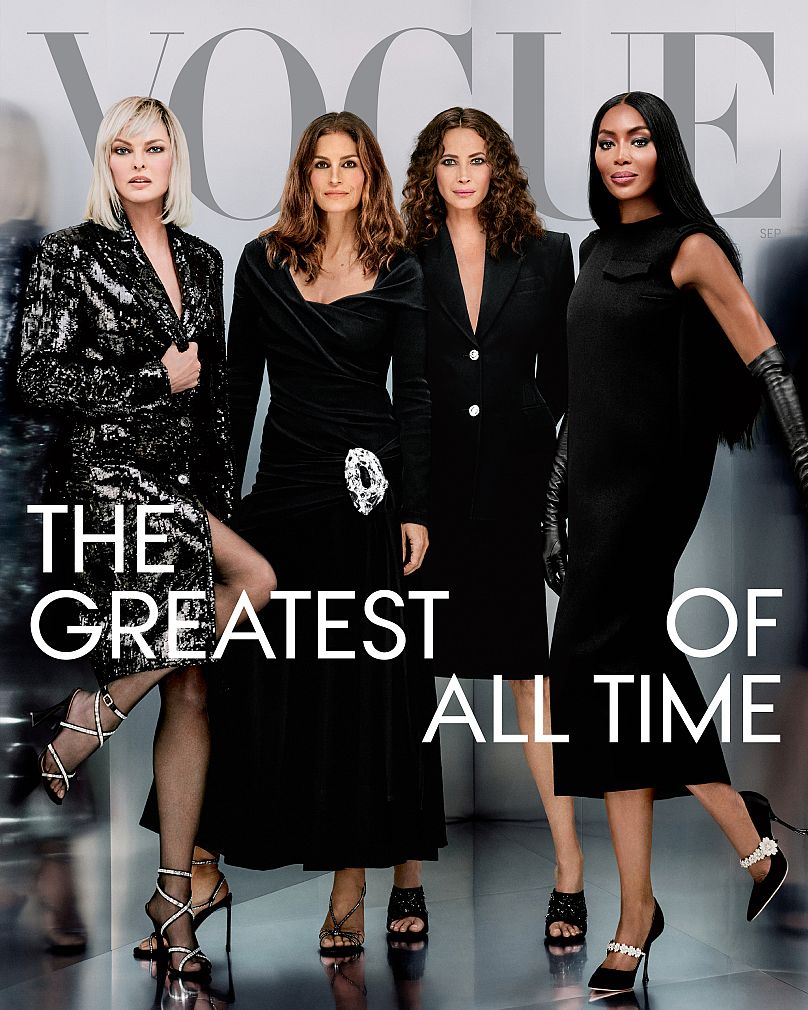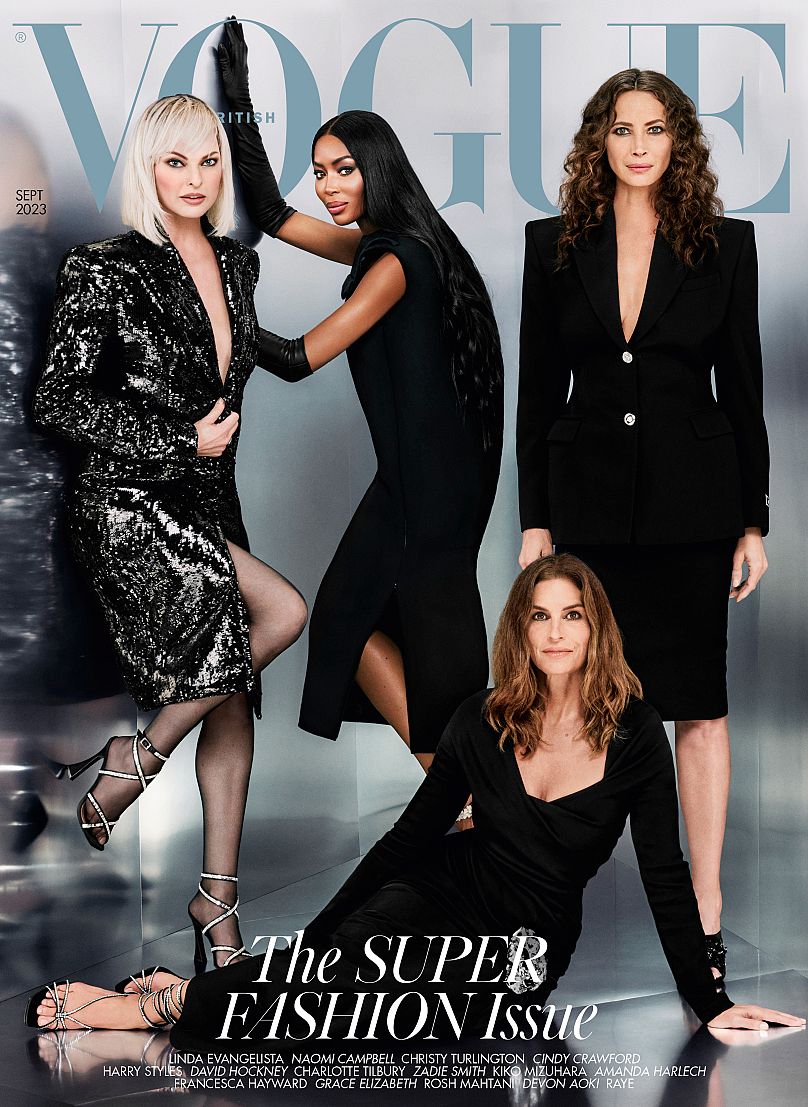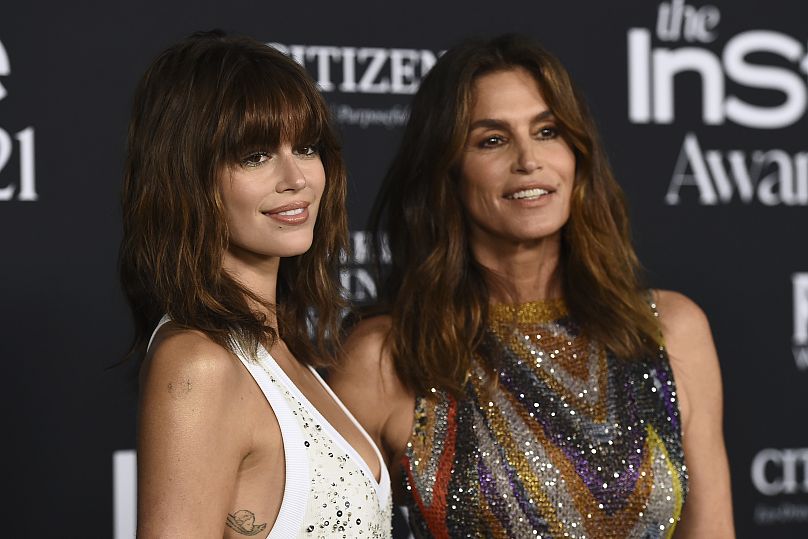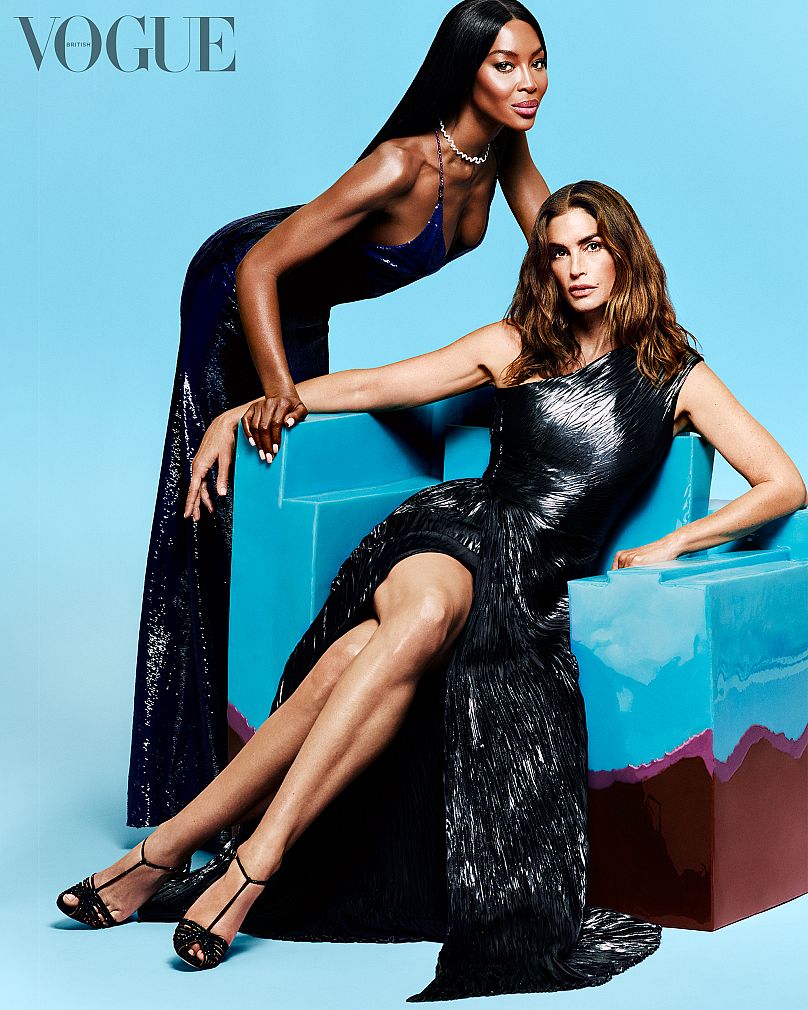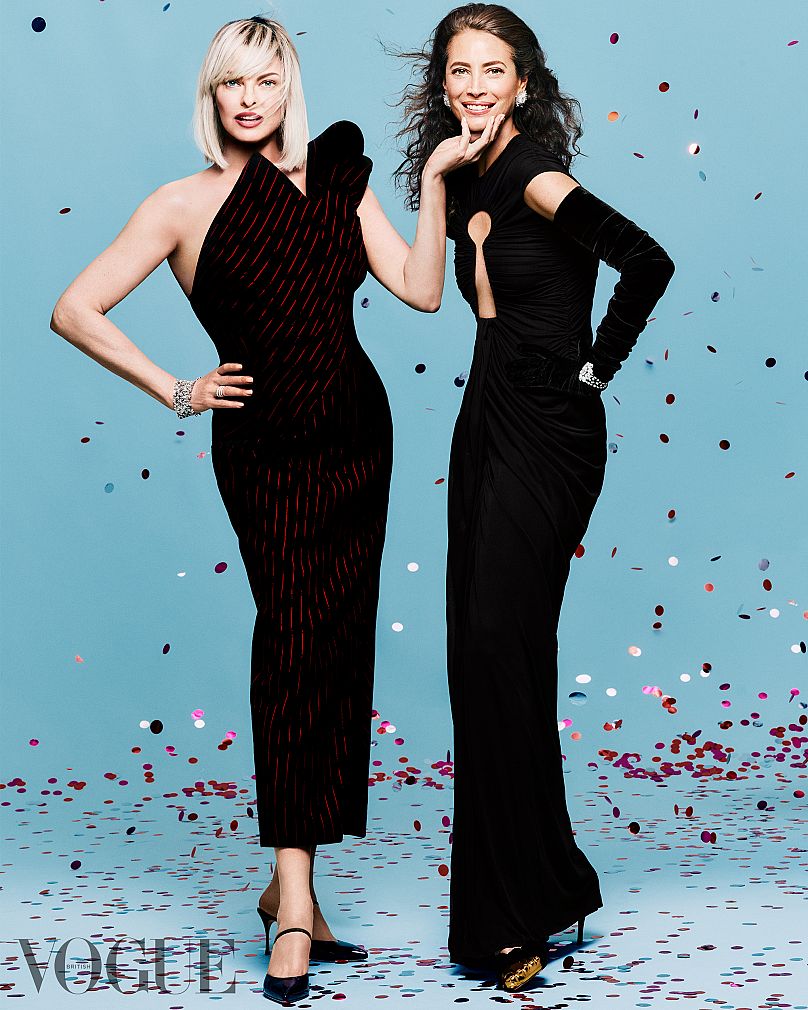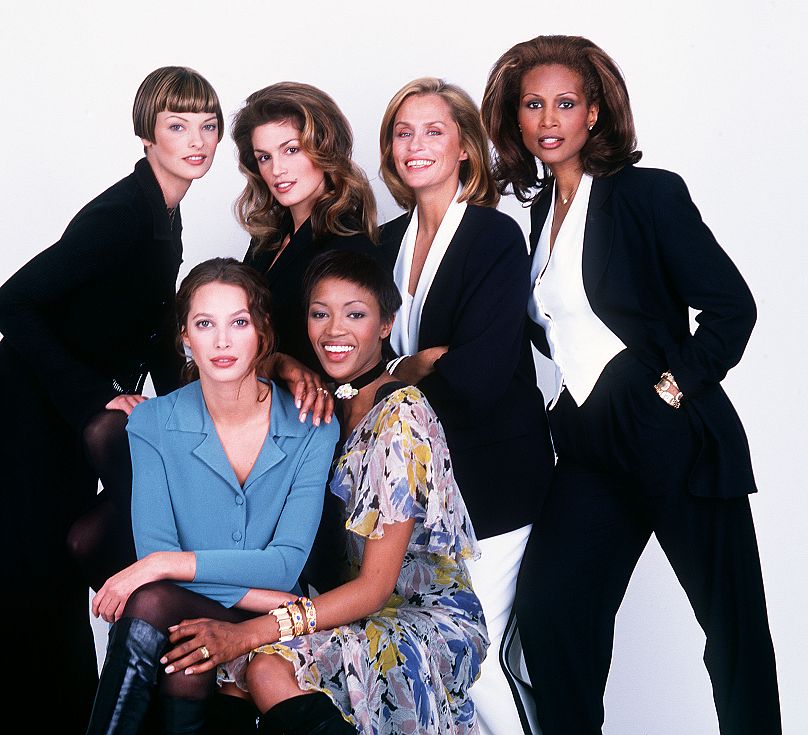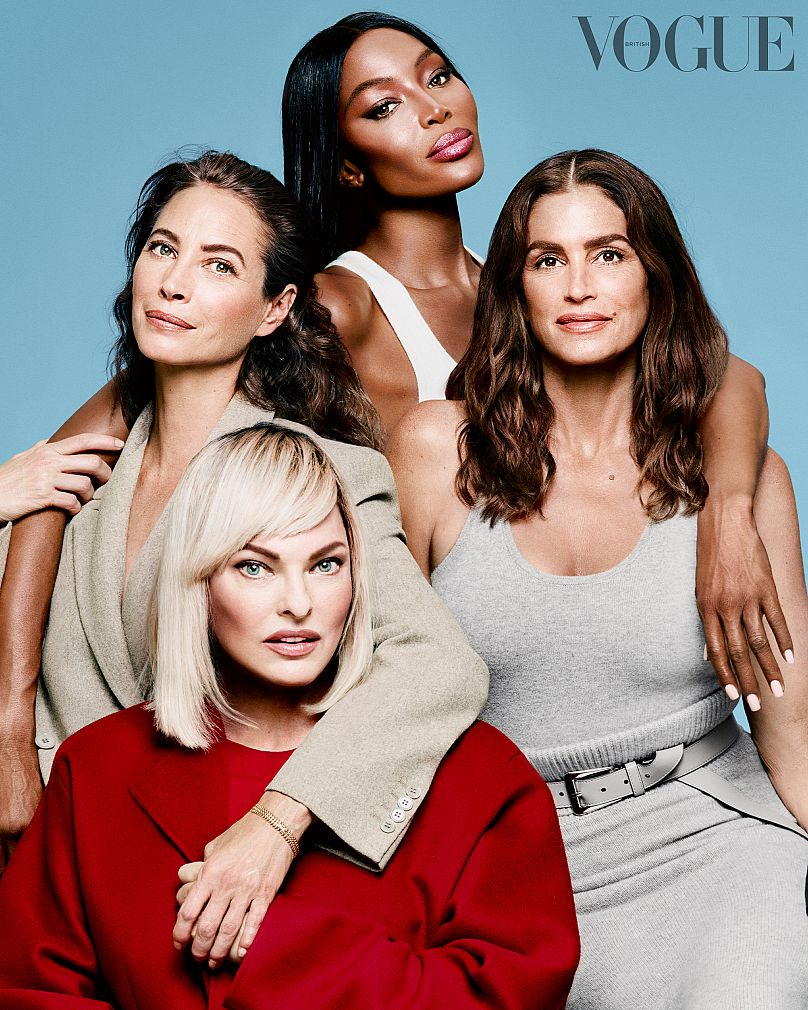Who better to be on the cover of the British and American editions of Vogue's September issue than Naomi Campbell, Cindy Crawford, Linda Evangelista and Christy Turlington - 33 years after that legendary shoot?
As one of the most iconic magazine covers in history, it was perhaps inevitable that the photograph which appeared on 1990’s British Vogue edition would be recreated.
It’s likely, though, that the stars of the shoot (as well as fashion fans the world over) would have expected it slightly sooner than 33 years later.
For the first time since that legendary cover all those years ago, supermodels Naomi Campbell, Cindy Crawford, Linda Evangelista and Christy Turlington have reunited, posing for the September issues of both British and American Vogue.
Sadly, one of the original cover stars, Tatjana Patitz, didn’t join her former colleagues, having passed away in January at the age of 56.
She was one of the so-called ‘big five’ supermodels of the early 1990s, who were a mainstay of catwalks and photo studios the world over.
Patitz, Campbell, Crawford, Evangelista and Turlington’s appearance on the Vogue cover shot by the late, great photographer Peter Lindbergh set the ‘90s off with a bang.
The German artist has long been credited with making the image so well known that he's often hailed as the brains behind the very idea of the supermodel.
"Using black-and-white photography was really important to creating the supermodel. Every time I tried to shoot them in colour, because their beauty was close to perfection, it ended up looking like a bad cosmetics advert", Lindbergh explained in a 2008 interview, "With black and white, you can really see who they are. It toned down the commercial interpretation that colour gives. What's so striking about black and white is how it really helps a sense of reality to come through."
The women went on to gain even more celebrity after appearing in the music video for George Michael’s single ‘Freedom!’ later that year.
Despite the nearly three and a half decades since the cover, Edward Enninful and Anna Wintour, editors-in-chief of British Vogue and American Vogue respectively - worked together to get the four remaining ultimate supermodels on the cover of their magazines on both sides of the pond.
“For such a hallowed moment, my esteemed co-conspirator Anna Wintour… and I decided there was only one thing for it,” outgoing chief Edward Enninful wrote in his editor’s letter, adding, “We had to put the legendary quartet simultaneously on the cover of both British and American Vogues”.
2023 can certainly be called the year of the supers. In September, Apple TV+ will release The Super Models, a long-awaited docuseries exploring the lives and careers of Campbell, Crawford, Evangelista and Turlington.
It comes at a time when nostalgia surrounding the original supermodels is at an all time high, with a new audience, Gen Z, opened up to them, mostly via TikTok.
In the early ‘90s, the group of women brought new life to the fashion industry, defining the era while ushering more acceptance for the model-as-celebrity trend.
They were known for their looks, style and as tabloid fodder. Linda Evangalista in particular was famous for her outspoken interviews, including one she gave to Vogue in 1990.
"We don't wake up for less than $10,000 a day" is still frequently cited as the most famous quote in modelling history, also described as "the 'Let them eat cake' of the 20th century".
Since the millennium rolled around, bringing an end to the glamour of the ‘90s, Vogue worldwide has offered up endless new ‘supermodels’ on its cover, as well as more unlikely stars, including the likes of a 106-year-old Indigenous Filipino tattoo artist and legendary actress Dame Judi Dench.
But fashionistas are still enamoured with the original supers, and it seems as though they’re not going anywhere - despite being close to 60 years old.
Is the obsession indicative of a society less focused on ageism than ever before? Perhaps.
While the biggest models of today - think Kendall Jenner, sisters Gigi and Bella Hadid and even Crawford's own daughter Kaia Gerber - are certainly household names, their ‘90s counterparts are arguably as famous as when they featured on that Vogue cover.
Naomi Campbell is still in high demand for runway shows and Linda Evangelista recently appeared solo on the cover of Vogue.
Many of them have active social media presences, but it’s not how they came to find fame, unlike in the case of the Jenners and Hadids of the world.
The ‘90s and ‘Y2K’ are ever-popular among Gen Z, with the Spice Girls and Sex and the City also managing to stay relevant years after they were first at the top.
Initially inserted into campaigns for fashion houses going global during the boom in the 1990s, some brands were concerned the models themselves were becoming bigger than the designs.
By the end of the decade, brands and magazines alike were opting instead for less recognisable faces to wear their clothes. This change went hand in hand with a seemingly endless supply of new faces, thanks in part to reality shows like America’s Next Top Model, which offered up a production line of girls keen to succeed in the cutthroat industry at any cost.
If a label or magazine did want a famous face, they could instead plump for film stars, many who were sample size and influenced fashion fans to buy, buy, buy.
In 1999, Allure magazine’s editor, Linda Wells, declared: “Nobody cares about models any more” and, for a while, that was true.
Over the last 20+ years, though, very few models have become household names. For every Cara Delevingne or Karlie Kloss, there were thousands recognisable by their faces only.
Vogue’s choice to put the original supers back on its cover suggests they never really went away, presenting a mindset that true power in the industry remains the real fashion currency.
With the need for models promoting goods eclipsed by influencers and the saturation of ‘content creators’ at an all time high, it’s likely the cultural saturation of the original supers will never be recreated.
Brands are also choosing a wide variety of models for their campaigns to appeal to a larger spectrum, a departure from the ‘90s trend of choosing one supermodel face for an entire label.
The buzz around the ‘90s supermodels isn’t just coming from Gen Z’s nostalgia for a more glamorous time before they were born, but also from the fans of the supers who remember their Vogue covers and catwalk domination very clearly.
Lindbergh's influence is clear here too.
The late photographer famously preferred black white images, commenting in 2014: "This should be the responsibility of photographers today to free women, and finally everyone, from the terror of youth and perfection".
The industry seems to be in consensus. By putting these fashion stars on covers and in campaigns, brands and magazine editors have the golden ticket. By appealing to the youngest fashionistas as well as tapping into the ‘silver dollar’ market, they’re able to harness a huge chunk of buying power from all ages.
If that’s not super, we don’t know what is.
The September issue of British Vogue is now available via digital download and on newsstands.












